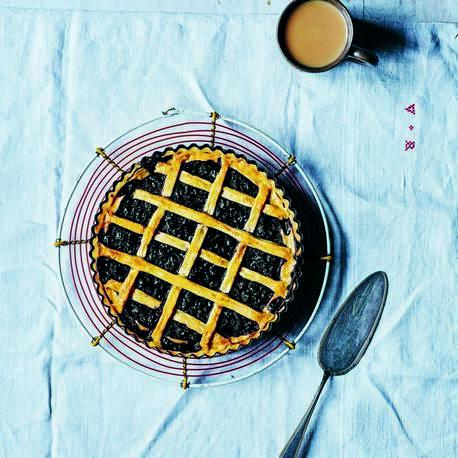 We can’t imagine how we missed out on the LEON phenomenon for all these years. The company launched its first restaurant in 2004 with a mission to give fish-and-chips-eating Londoners a taste of healthy fast food. We certainly have a penchant for fast food–and we don’t mind if it’s also good for us.
We can’t imagine how we missed out on the LEON phenomenon for all these years. The company launched its first restaurant in 2004 with a mission to give fish-and-chips-eating Londoners a taste of healthy fast food. We certainly have a penchant for fast food–and we don’t mind if it’s also good for us.
We guess Londoners feel the same way. They certainly embraced LEON’s Mediterranean Diet-inspired menu. Only a year after opening, the Observer Food Monthly named LEON the “Best New Restaurant in the UK.” More restaurants followed in London, Amsterdam, Utrecht, Oslo, and most recently in Washington, DC. (1724 L St. NW; (202) 813-3867; leon.com) Along with the restaurants, LEON has created a cottage industry of cookbooks. The latest, LEON Happy Baking (by Claire Ptak and Henry Dimbleby, Conran Octopus, $19.99), finally opened our eyes.
The timing was perfect. We’re always on the alert for new recipes during the all-too-brief season for wild Maine blueberries. The book and the first of the blueberries arrived in our kitchen at about the same time. Many of LEON’s recipes are sugar-, dairy-, wheat or gluten-free. But we were drawn to a more traditional recipe for “Hattie’s Black Currant Tart Canelle.” The crust is made with plenty of flour and butter and a very generous dose of ground cinnamon. Authors Ptak and Dimbledy suggest substituting blueberries for the black currants and we figured that the small, intensely flavored wild blueberries would make a great filling for the rich crust.
The blueberries worked wonderfully, but for our taste, they didn’t marry as well with the cinnamon cookie brightness of the crust. That’s easily fixed. Cut the cinnamon in half if you’re using wild blueberries instead of black currants. The authors have kindly granted us permission to print their recipe and the accompanying photo.
HATTIE’S BLACK CURRANT TART CANELLE
 Serves: 6–8
Serves: 6–8
Prep time: 25 mins + chilling Cook time: 25 mins
Vegetarian
1 1/3 cups all-purpose flour, plus extra for dusting
6 tablespoons unsalted butter, plus extra for greasing
1/3 cup superfine sugar, plus extra for sprinkling
2 egg yolks
1 tablespoon water
1 tablespoon ground cinnamon
vanilla ice cream or crème fraîche, to serve
FILLING:
2 cups black currants or blueberries
extra superfine sugar to add to the berries
milk or beaten egg, to glaze
Preheat the oven to 350°F and grease a 7-inch fluted tart pan.
To make the dough in a food processor, add the flour, butter, sugar, egg yolks, water, and cinnamon and process until it comes together into a ball. Remove from the machine, cover with plastic wrap, and chill well for at least an hour in the refrigerator.
To make the dough by hand, rub together the flour, butter, sugar, and cinnamon with your fingers until you have a breadcrumb-like consistency. Slowly add the egg yolks and water until the mixture comes together into a ball. Cover with plastic wrap and chill well.
Put the black currants or blueberries into a saucepan, cover generously with superfine sugar, and put over low heat. Stir regularly, and when you are sure that all the sugar has dissolved, turn up the heat until the fruit is bubbling and thickened. Remove from the heat.
Roll out the dough on a floured surface to 1/2 inch thick and line the tart pan, gathering up any scraps. Fill the tart shell with the fruit compote, and roll out the scraps to make an extra thin strip to go around the edge for a tidy finish. There should be enough leftover dough to make a lattice pattern over the top of the tart, if you want.
Brush the pastry with milk or beaten egg, and bake in the oven for 20–25 minutes, until the pastry is golden. Serve cool, with vanilla ice cream or crème fraîche.
